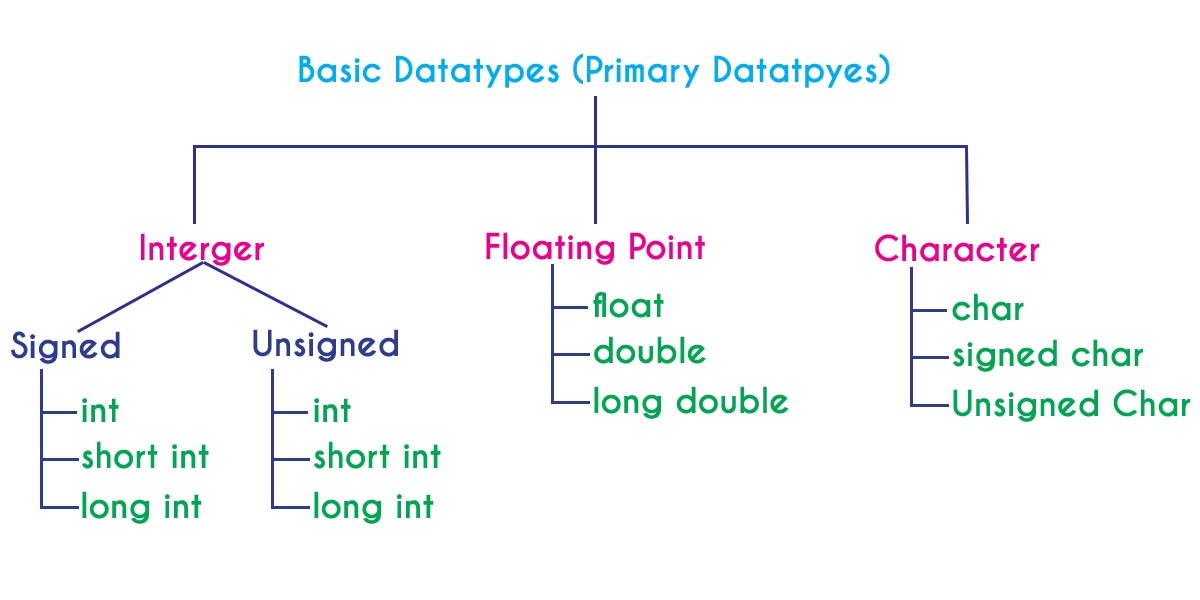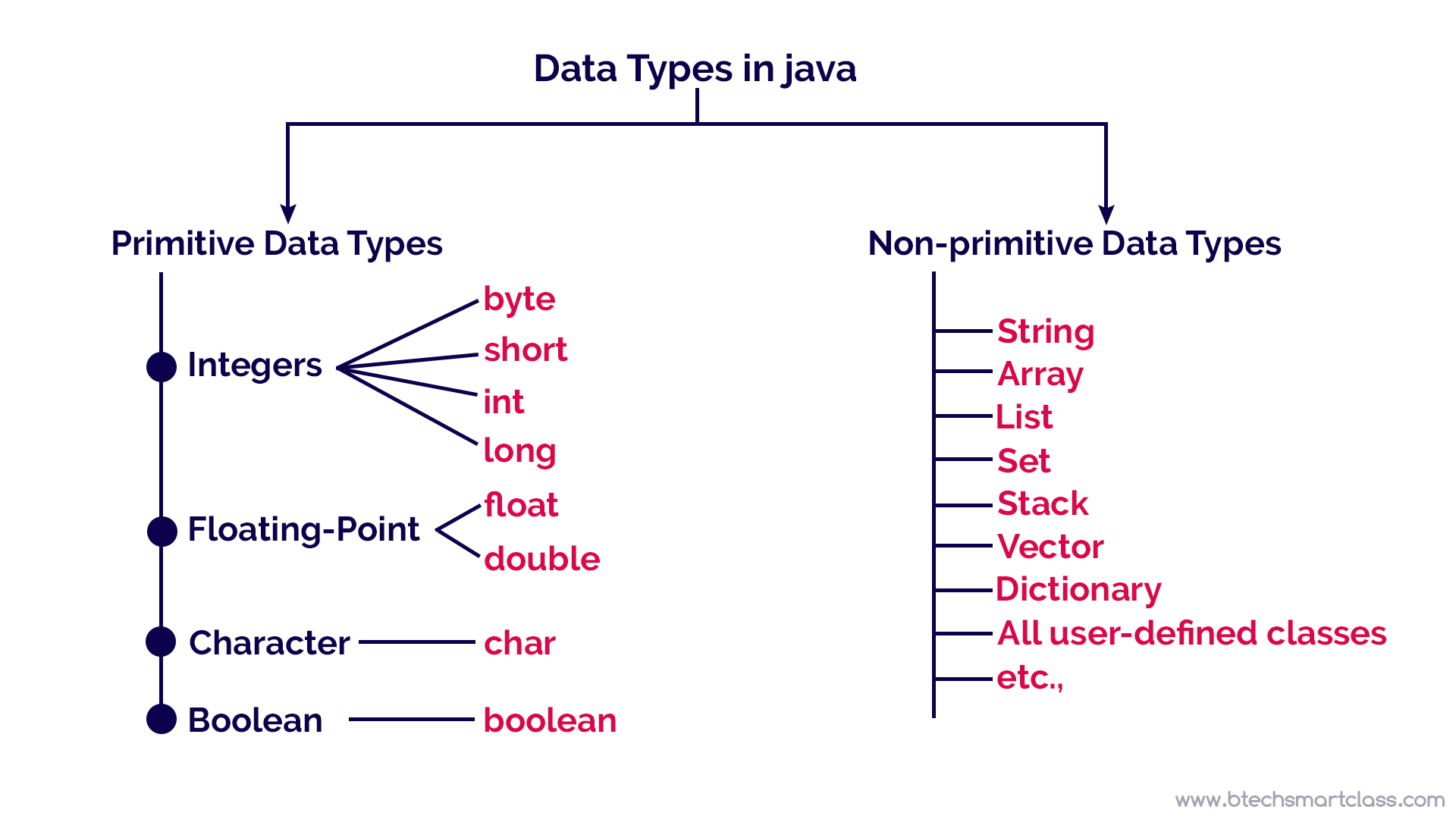

In this tutorial, we will focus on the most basic ones: Basic Format Specifiers There are different format specifiers for each data type.

Lets see what happens to the floating point variables: Basic Data Types The data type specifies the size and type of information the variable will store.
#Basic data types code
When the above code is compiled and executed, it produces the following result − The following example demonstrates use of some of the types −Ĭonsole.WriteLine("declaring on the day of: ", si, d) 3.4028235E+38 through -1.401298E-45 for negative values ġ.401298E-45 through 3.4028235E+38 for positive valuesĠ to approximately 2 billion Unicode charactersĠ through 18,446,744,073,709,551,615 (unsigned)Įach member of the structure has a range determined by its data type and independent of the ranges of the other members In C language, basic data types are used to store values in integer and decimal forms. VB.Net provides a wide range of data types. The type of a variable determines how much space it occupies in storage and how the bit pattern stored is interpreted.

#Basic data types generator
For example, integers are a basic type defined in mathematics, while an array of integers is the result of applying an array type generator to the integer type. Data types refer to an extensive system used for declaring variables or functions of different types. Generated data types or derived data types are specified, and partly defined, in terms of other data types.


 0 kommentar(er)
0 kommentar(er)
